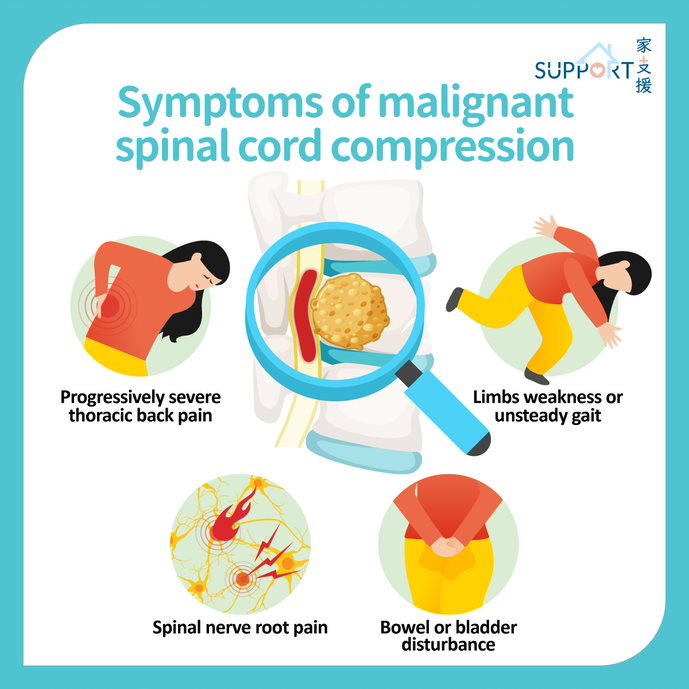Symptoms of malignant spinal cord compression include:
- New, progressively severe back pain, with the following characteristics:
- Mild to start with but becomes more severe
- Spread down across a limb, or to the buttocks
- Sensation of having a band around the chest or abdomen
- Aggravated by coughing, straining or lying flat
- New spinal nerve root pain (burning, shooting, numbness)
- Numbness that may radiate down to the legs or buttocks (like sciatica)
- Weakness of the legs or unsteady gait
- Sensory impairment or altered sensation in legs or arms
- Bowel or bladder disturbance
- Difficulty controlling the bladder or bowels (incontinence)
- Difficulty in passing urine
- Constipation
- Loss of sphincter control, which is a late sign with poor prognosis

If symptoms appear:
If symptoms of MSCC appear, one should seek medical advice immediately.
One should contact the hospital team whom they receive cancer treatment and follow-up appointments from. If one is unable to get in touch with their own medical team, and go to the nearest Emergency Department (A&E).
What to tell the doctor:
- Tell them you have cancer and worried you may have spinal cord compression
- Describe your symptoms
- Tell them that you need to been seen straight away.
Do not wait as symptoms will worsen. The earlier the diagnosis, the sooner the treatment can begin. If left untreated, permanent and irreversible neurological deficits may occur.




